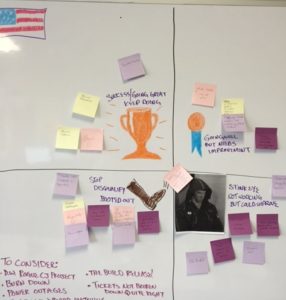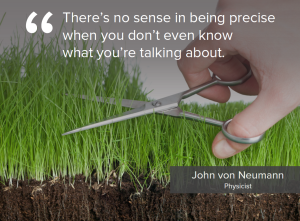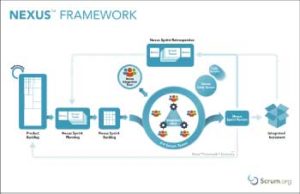The notes from this Meetup are going to be like I do notes after a retro for any of the teams that I work with. A description of what we did and relevant info on the results.
Check In – One Word
Everyone was asked to write on a post it note how you would describe 2016 with one word – you may also use one song, book, or movie title, even if it is more than one word.
Result: Great words and we got to know a little more about each other 🙂
Focus On: Being Agile vs Doing Agile
We looked at and discussed the following images
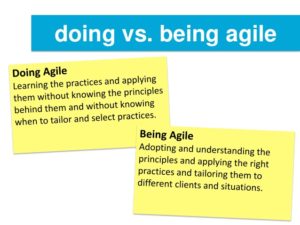

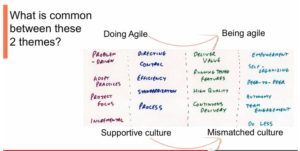
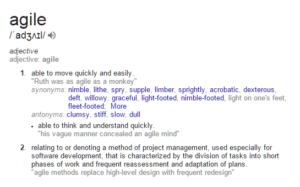

Discussion questions:
- Is thinking about being agile vs doing agile new for anyone?
- Is anyone seeing any areas where things could stand to improve at your job?
RESULT: It wasn’t exactly new for anyone but after looking at the handouts they were thinking about it in a different way and saw that there was a major difference, AND that it was often the missing link between how things “should” be and how things “are”. Everyone saw areas where things could improve at work and within ourselves as well.
Set the goal/ context (1) The goal of this retrospective is to look at being agile vs doing agile, to identify and gather feedback from each of our places of employment, and to create action items to improve challenges as well as continue to maximize what is working that any team could also use.
Energizer: Agile Principles
- Ask the team about the twelve Agile principles. If they know it jump to the next point, if they don’t do a brief introduction to Agile values and principles.
- Ask all team members to stand up.
- Read loud and clear the twelve Agile principles. For each one of them, any team member that thinks the team is accomplishing the principle should remain standing up, but if they think they are not fulfilling the principle they should sit down
- Keep reading until everyone is sitting down.
RESULT: Everyone sat down within the first 6 principles , but I continued reading through all of them and then everyone shared if they would stay sitting or not on each one.

Gathering Information: DAKI Drop, Add, Keep, Improve
While thinking about the difference between BEING Agile and DOING Agile factor in how things are at your place of employment and/or these Agile Meetups. Then think about what things you would drop and what you would add. What you would keep and what you would improve on. Please write one thing only per post it note and when you are finished go ahead and bring them up and place them where they go.
Drop
- Negativity
- Apathy
- Putting past experiences into present situations
- Drop Bottlenecks
- Thinking having a burndown equals being agile
Add
- Accountability
- Willingness to change/ grow
- Continuous Learning Engagement
- More understanding of agile and practice being agile
Keep
- Perseverance
- Communicating
- Keep Agile Process to learn Agile
- Doing leads to Being
- Quantity
- Productivity
Improve
- Open Mind
- Retros – self-organization
- Embrace change
- Deliver Working Software
- Working with Customers
- Environment
- Improve communication
- Team Problem Solving of interested parties
- Emotional IQ/ awareness of others on team/ realize you are part of a team and don’t always get your way
- Looking for compromise
Analyze and Create Action Items:
Since we are all on separate teams this is not the same as it usually would be but I thought we could still take a few that have several people mentioning them or are the most common and we could come up with some Action Items that any one of us could take back to our jobs and implement.
Action Items – not in usual SMART format because of the nature of doing a retro for people working in different places etc.
- Accountability
- Create exposure
- Create a process for people on the team who have to deal with other commitments
- Work with people who go off and do their own thing individually and help them to be part of the team
- Show the 12 principles of Agile and help teach the team with them
- Show one a day and discuss or do a game with it to practice it
- Show/ discuss one per retro and go a little more in depth, it will also take longer
- Gamify the principles
- Teach about the value of being Agile vs being Agile
- For negativity/ apathy etc,..
- Deal one on one and find the root, what are they opposed to and address it with them
- Don’t push, nudge OK depending on who?
- Try to find a way to cater Agile to them so it serves their interests so they see how it benefits them
- Go slow – don’t do everything at once
- Companies should adjust their thinking to attract the type of people and skill sets they want to be added to their teams and acknowledge that these awesome people could also go work at other places like Google, or Facebook.
Close Out – ROI –
Vertical line with smiley face at top and sad face at the bottom. Asked for a post it note to be placed where on the scale you think it should be when thinking about your ROI on the retro/ meeting and if you want to say why good or bad just leave a note on the post it not and I will use the feedback to improve retros and you will have the opportunity to share your thoughts to make them even better.
Feedback
- Great retro
- Your ability to maintain control over conversation while listening to responses
PS I’m aware that there are two 2’s above – there is something squirrely with the formatting and it is more important to me to get this out than make it look perfect 🙂
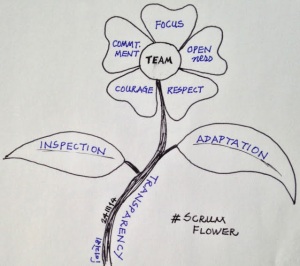

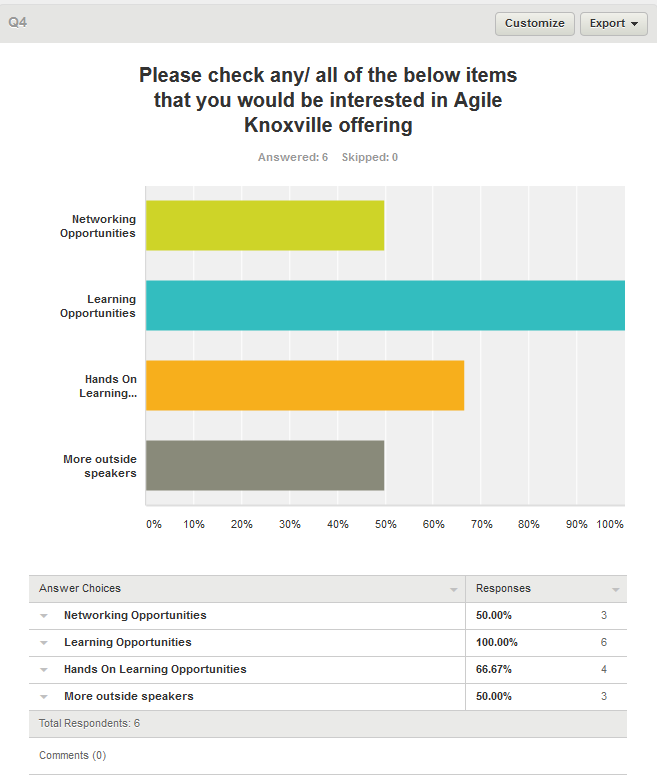

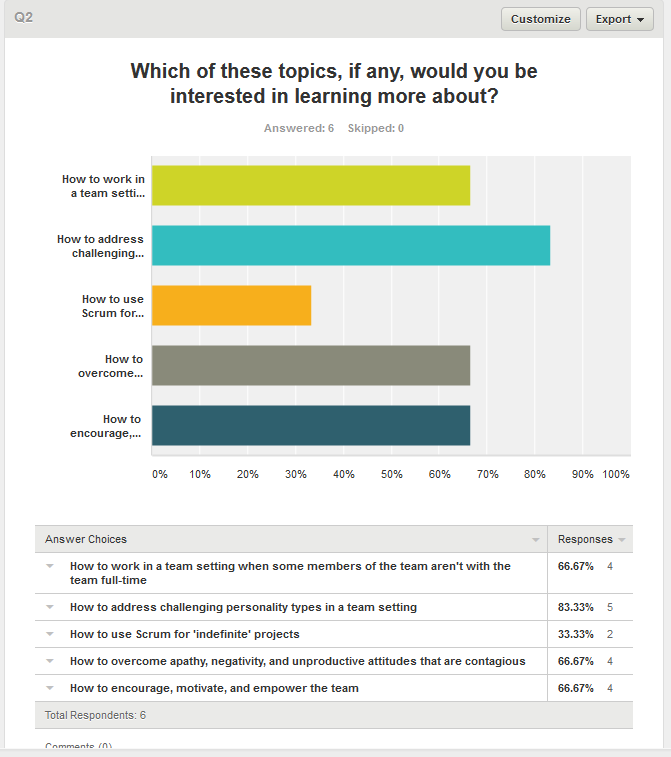






 For some people the fear of change trumps the potential benefits of the change itself, at least initially. The old status quo may need improvements but at least it is familiar, at least it isn’t change. As a member or leader of a team, it is good to keep in mind that some in your team may be resisting change because they fear it. It can be tempting to pull back when there is resistance. But resistance itself isn’t enough to make you not follow through with the change, the question is why is there resistance?
For some people the fear of change trumps the potential benefits of the change itself, at least initially. The old status quo may need improvements but at least it is familiar, at least it isn’t change. As a member or leader of a team, it is good to keep in mind that some in your team may be resisting change because they fear it. It can be tempting to pull back when there is resistance. But resistance itself isn’t enough to make you not follow through with the change, the question is why is there resistance?
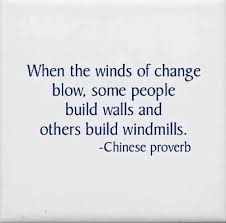



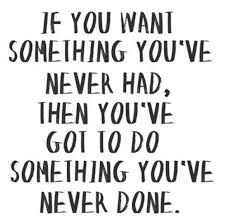
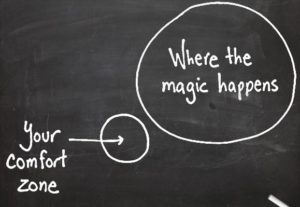
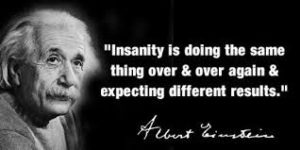 As a Scrum Master, your job (or part of it) is to help the team get to where the magic happens. And yet as a Scrum Master this insanity is one of the main things that I see again and again. So many teams want the benefit of change but when it comes to acting and thinking differently they often resist! There is plenty of talk about the benefits of increased productivity, satisfaction, and creativity but it seems few mention that 90% + of the time the team will have to get out of their comfort zone in order to truly accomplish these goals.
As a Scrum Master, your job (or part of it) is to help the team get to where the magic happens. And yet as a Scrum Master this insanity is one of the main things that I see again and again. So many teams want the benefit of change but when it comes to acting and thinking differently they often resist! There is plenty of talk about the benefits of increased productivity, satisfaction, and creativity but it seems few mention that 90% + of the time the team will have to get out of their comfort zone in order to truly accomplish these goals.



